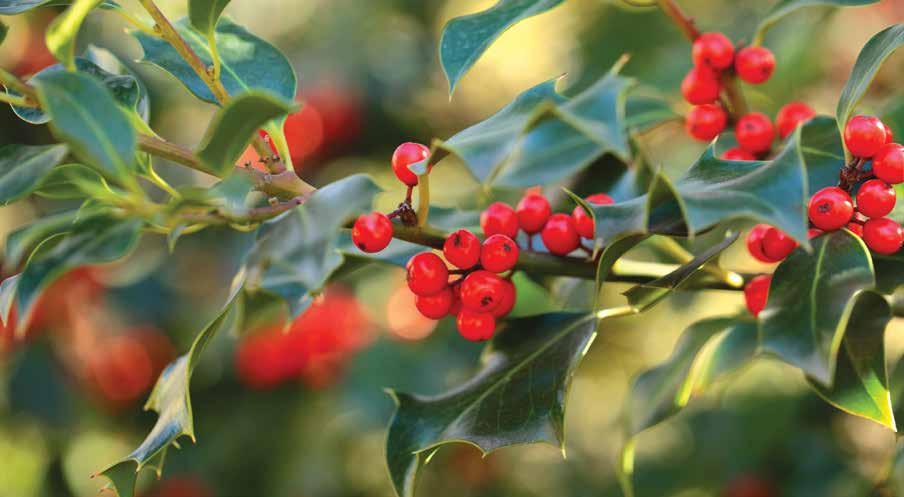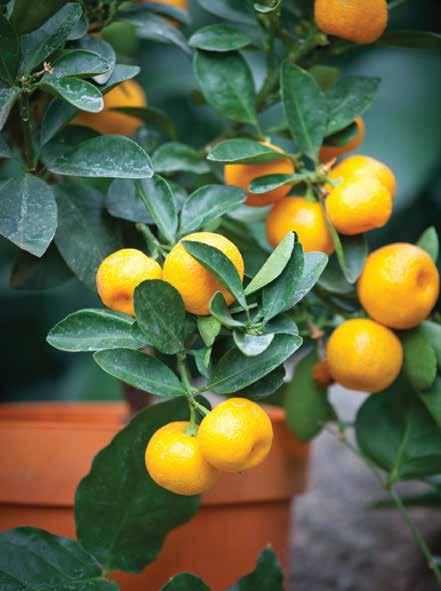
5 minute read
The Cutting Garden bring winter landscape in
The Cutting Garden
winter décor gathered from the landscape
It’s the most wonderful time of the year, and as winter sets in and the holiday season approaches, many gardeners turn from working diligently in their yards to relaxing in a cozy home and taking a break from the labor of fall cleanup. However, just because the weather outside may be frightful and cold, adding a touch of cuttings from your own garden can bring the fruits of a gardener’s hard work all season into the home and liven up holiday decorations.
Though hobby stores all have realistic faux greenery, nothing beats the look and scent that fresh pine cuttings bring into the house. Garden centers frequently carry large selections of cut greens and various stems used in making arrangements and holiday décor, but it never hurts to have a backup plan in case the garden centers run out, and there is no better place to look than your own landscape! With some strategic planning, gardeners can hide a “cutting garden” right in their landscape for use every winter.
Good landscapes utilize evergreens to balance out blooming, deciduous shrubs, and to give yearround interest. One of the most versatile evergreens is the Juniper. Available in columnar and spreading varieties, every gardener could find a place for one in their yard. ‘Wichita Blue’ gives a nice blue look to the garden year-round, and adds fragrant contrasting foliage to winter arrangements. Use care not to over-trim these, as evergreens generally don’t regrow in areas where too much has been removed, so make certain to trim from areas that benefit from shaping.
Pines and spruces, though tricky to get started during Midwest summers, are an asset to the landscape once established. It is best to plant in early fall (September-October) once temperatures are less stressful on plants. Planting in March or April is usually successful. In both cases, monitor watering well; lawn sprinklers don’t provide enough water for trees, and conifers need deep moisture with excellent drainage. Small branches may be removed to use in arrangements, or weaving into wreaths, and are sure to bring a fresh scent into the home.
Boxwoods give broadleaf contrast to the conifer-type evergreens in the landscape, and are generally easy to grow in this region. A sprig or two in arrangements are best utilized on the front porch or driveway outside, as they would bring an unpleasant scent into the house.
Holly is the quintessential holiday plant, thanks to that catchy Christmas Carol! Holly produce berries on female plants only, and a male is required to provide pollen for the female plants. Most landscapes only require one male plant. Dense growth makes this an easy plant to trim a few select branches for use on mantles, arrangements, and decking the halls.
Bracken’s Brown Beauty Magnolia add sheen and contrast to arrangements and wreaths, with leaves of shiny green on top, and cinnamon undersides. Fragrant spring blooms make it a worthy plant for the landscape. As magnolias mature, most plants can withstand losing a short branch or two to the efforts of holiday decorating. Corkscrew Weeping Willow is a unique tree that would love to be planted in a moist area. Willows actually help dry up soggy parts of the yard. As a fast grower, willows can stand to lose a substantial amount of stem tips for use in arrangements, and regrow ten-fold the next season.
Red Twig and Yellow Twig Dogwoods are substantial, large shrubs in the landscape all season long, and are stunning during the winter months with bright red or yellow stems. They are especially showy during winter snows with their branches showing off against the pure-white ground. If gardeners are looking for a smaller variety, Proven Winners offers compact red and yellow twig dogwoods in the Arctic Fire® series. For a variegated look, ‘Ivory Halo’ adds a nice touch to the garden in the summer with red stems during winter. A few stems from one of these add vertical interest and color to arrangements.
River Birch branches add a rustic look to arrangements, or bundled in a fireplace. Most river birch trees can stand a mild pruning from time to time, so when you prune, save the branches for use in holiday decorations. If there is no river birch handy, the white branches of a Quaking Aspen make for a nice substitute.
When using landscape plants to make arrangements and decorations, keep in mind that once removed from the mother plant, branches have a limited lifetime. If brought inside the house, one can expect these cuttings to last a few weeks at best. (Remember, it is important to remove dried up branches to minimize fire hazards!) When displayed in pots and urns outside, they may last well into the new year with regular watering when above freezing.
Also be mindful of how much you prune from living landscape plants. It is best to keep trimming on coniferous evergreens to a minimum, and always take from an area of the plant that is not readily visible; prime places for trimming are where they are growing into the house or other plants and never prune the top (growing point) of a pyramidal/columnar evergreen.
With strategic planning and pruning, anyone’s garden can give year round interest both in the landscape and as a source for holiday décor.
SEAN HOLLAND Perennials Manager
Sean Holland is Perennials Manager at Suburban Lawn & Garden, 135th and Wornall location, in Kansas City, Missouri. You may reach him at seanh@suburbanlg.com.
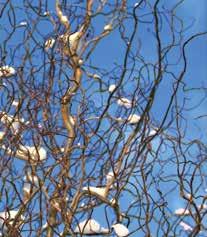
Corkscrew Weeping Willow Red Twig Dogwood Yellow Twig Dogwood Bracken’s Brown Beauty Magnolia
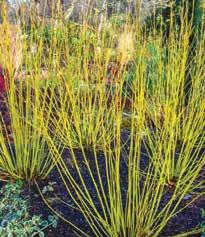
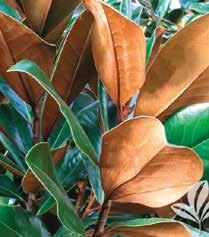
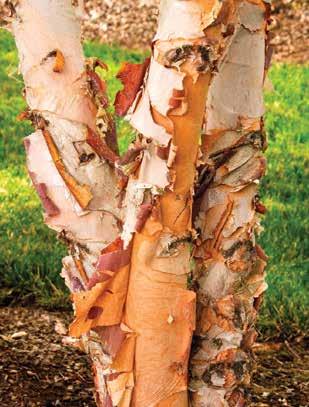
River Birch Above: Juniper; Below: Holly

